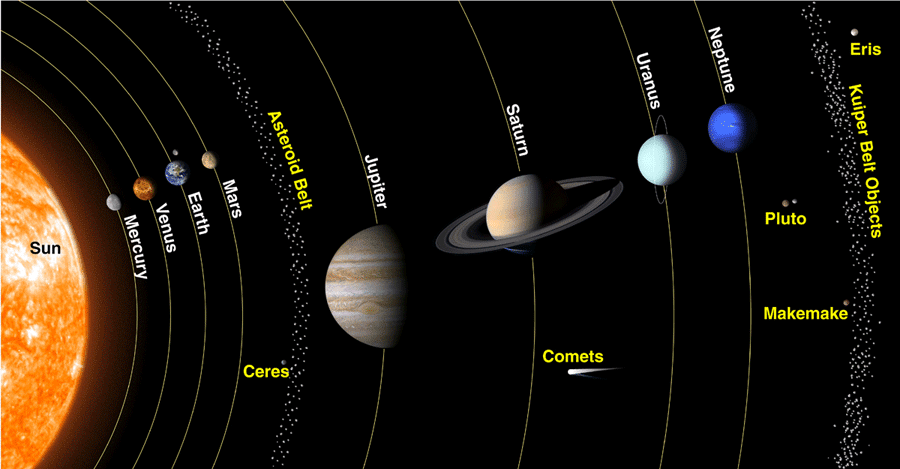Geography
Dwarf Planet Ceres
- 13 Aug 2020
- 3 min read
Why in News
As per the data collected by NASA’s Dawn spacecraft, dwarf planet Ceres reportedly has salty water underground.
- Dawn (2007-18) was a mission to the two most massive bodies in the main asteroid belt - Vesta and Ceres.
Key Points
- Latest Findings:
- The scientists have given Ceres the status of an “ocean world” as it has a big reservoir of salty water underneath its frigid surface.
- This has led to an increased interest of scientists that the dwarf planet was maybe habitable or has the potential to be.
- Ocean Worlds is a term for ‘Water in the Solar System and Beyond’.
- The salty water originated in a brine reservoir spread hundreds of miles and about 40 km beneath the surface of the Ceres.
- Further, there is an evidence that Ceres remains geologically active with cryovolcanism - volcanoes oozing icy material.
- Instead of molten rock, cryovolcanoes or salty-mud volcanoes release frigid, salty water sometimes mixed with mud.
- The scientists have given Ceres the status of an “ocean world” as it has a big reservoir of salty water underneath its frigid surface.
- Subsurface Oceans on other Celestial Bodies: Jupiter’s moon Europa, Saturn’s moon Enceladus, Neptune’s moon Triton, and the dwarf planet Pluto.
- This provides scientists a means to understand the history of the solar system.
- Ceres:
- It is the largest object in the asteroid belt between Mars and Jupiter.
- It was the first member of the asteroid belt to be discovered when Giuseppe Piazzi spotted it in 1801.
- It is the only dwarf planet located in the inner solar system (includes planets Mercury, Venus, Earth and Mars).
- Scientists classified it as a dwarf planet in 2006.
- It has a diameter of about 950 km, which is more than one-fourth of Earth’s moon.
- It takes 1,682 Earth days, or 4.6 Earth years, to make one trip around the sun.
- It completes one rotation around its axis every 9 hours.
- It does not have any moon or rings.
- It has a 92 km wide crater named Occator located in its northern hemisphere.
- It is the largest object in the asteroid belt between Mars and Jupiter.
Dwarf Planets
- According to the International Astronomical Union (IAU), which sets definitions for planetary science, a dwarf planet is a celestial body that - orbits the sun, has enough mass to assume a nearly round shape, has not cleared the neighborhood around its orbit and is not a moon.
- The first five recognised dwarf planets are Ceres, Pluto, Eris, Makemake and Haumea.







